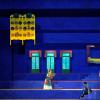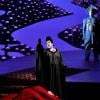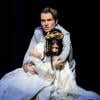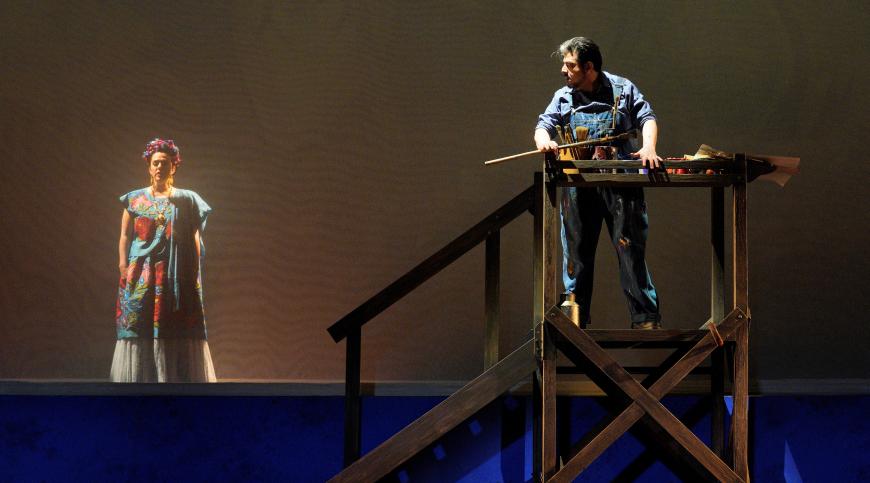
Over the last several decades, the Mexican artists Frida Kahlo and Diego Rivera have become icons on account of their distinctive, instantly recognizable art, leftist politics, and turbulent personal lives. From this potent mix, composer Gabriela Lena Frank and Pulitzer Prize-winning playwright and librettist Nilo Cruz have conjured up a swirling, vivid opera, El último sueño de Frida y Diego (The last dream of Frida and Diego). On June 13, San Francisco Opera, one of the work’s co-commissioners, presented Frida y Diego as the last opera of its centennial season.
Like its subjects, the opera bursts with color and energy, both onstage and in the pit. Jorge Ballina’s sets are painted deeply saturated shades of orange and blue, and he situates the stage within a giant, decorative picture frame. Eloise Kazan’s costumes are similarly eye-catching in both color and design. In one particularly striking scene, different versions of Frida, all based on her paintings, appear onstage within individual frames, while above fly five brightly decorated hearts.
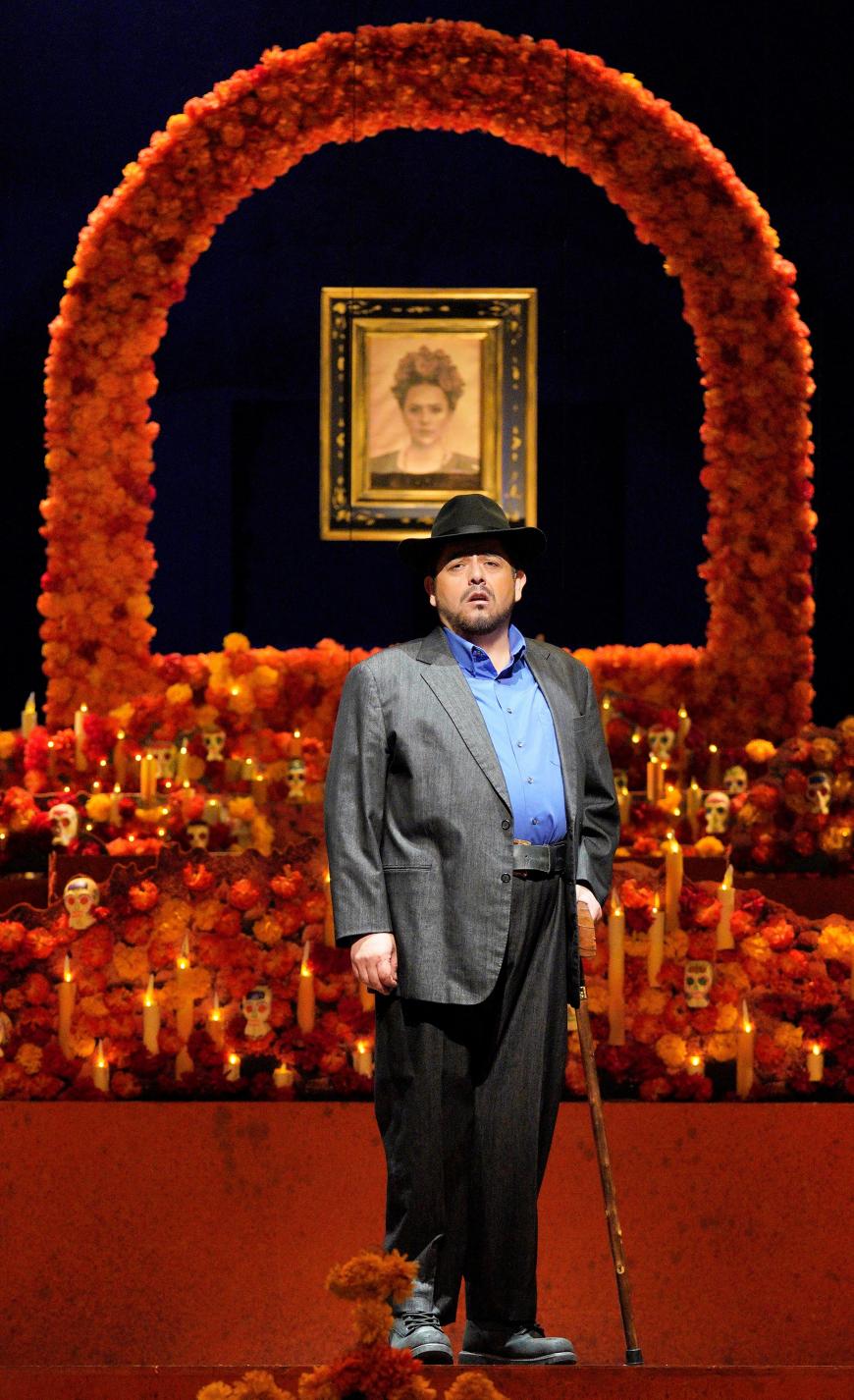
The plot of Frida y Diego revolves around the lonely grief Diego is still experiencing three years after Frida’s death and his wish that she would come back from the dead. In the cosmology of the opera, this is something that can happen, and so it does. The opera opens in a graveyard on Nov. 2, 1957, the Day of the Dead, or Día de los Muertos. Villagers visit their families’ dead, bringing them food and drink.
Among them is Diego, disconsolate and only weeks from his own death. Three villagers recognize him, and they chat. An old woman approaches Diego trying to sell him flowers. He leaves the cemetery dejected.
And that’s when Frida y Diego really gets wild. The stage is transformed into Mictlan, the Aztec underworld. The old woman sheds her cloak, and we see that she’s really La Catrina, the Keeper of the Dead, in the guise of a skeleton. She’s there to grant permits for short returns to the world of the living.
One candidate for a permit is Frida, who resists, feeling that she’s best off in the land of the dead, far from the terrible physical and emotional pain of her life. Another is Leonardo, a female impersonator who wants to return as Greta Garbo so that he can satisfy the wishes of a Garbo fan whose great dream was to meet the actress.
All of the plot points set in motion in Act 1 are resolved in Act 2, but this no-spoiler review will only tell you that Frida y Diego neatly blends elements of Aztec religion with the classical myth of Orpheus. That’s quite a trick, and Cruz’s libretto is brilliant in other ways. It flows so well that you won’t notice there are 22 scenes. It’s poetic rather than talky and structured to give Frank solos, trios, duets, and choral ensembles on which to build the score.
And Frank’s music flows as seamlessly and organically as the libretto, balancing lyricism and astringency. Her transparent, singer-friendly orchestration is full of sinuous wind solos weaving their way around the vocal lines and intriguing instrumental combinations. A dissonant figure in the celesta, flutes, and piccolo punctuates two moments when the veil between life and death is particularly thin. The marimba’s ominous low register portends sorrow.
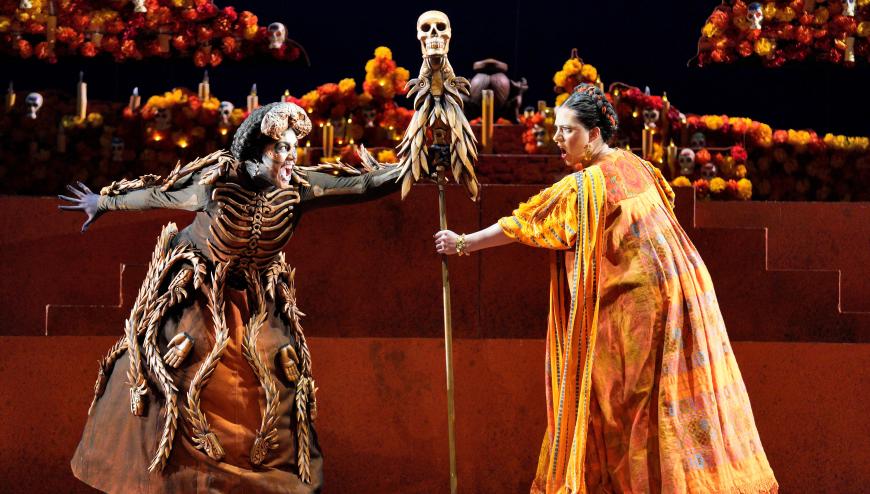
It’s an extremely singable score. The soloists have room to show off what they do best without going to vocal extremes. The Argentine mezzo-soprano Daniela Mack, a former Adler Fellow who has previously sung leading roles at SF Opera in Rossini and Handel, here brings her richly colored voice to Frida, whose music calls for quite a bit of agility. Another former Adler Fellow, Mexican baritone Alfredo Daza, returns to SFO after a 20-year gap, and you can only wonder why. He has the presence and looks of a star — he is perhaps too handsome for verisimilitude as the homely Diego — and a beautiful, warm voice.
The Chilean soprano Yaritza Véliz, making her SFO debut as La Catrina, fooled me into thinking she was a mezzo-soprano, so dark and arresting is her agile voice. Rounding out the principal cast is the sensational countertenor Jake Ingbar as Leonardo. Ingbar might better be called a male alto; he has an exceptionally big and rounded voice and made an enormous impact garbed as a 1920s starlet.
Among the smaller roles, several current Adler Fellows stood out. Tenor Moisés Salazar, who sings Pinkerton in the last performance of SFO’s Madama Butterfly on July 1, here took two small parts. Mikayla Sager, Nikola Printz, and Gabrielle Beteag were a fabulous trio of Frida images.
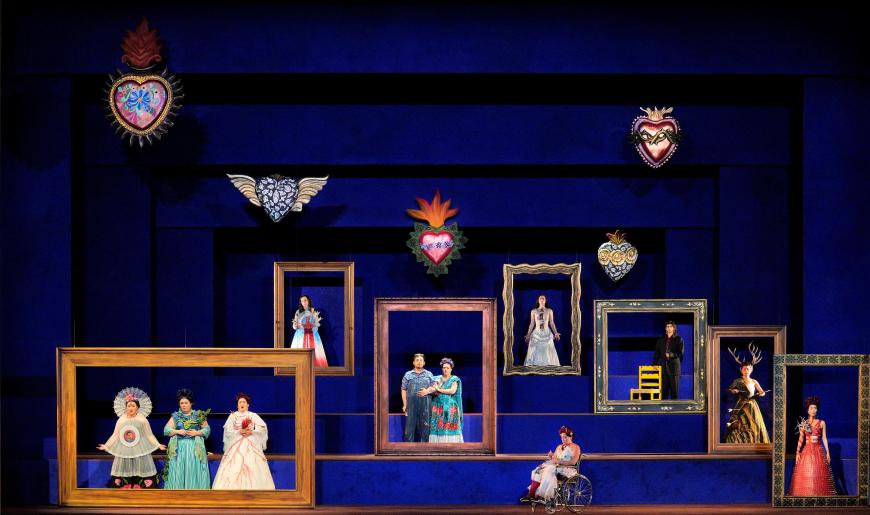
Lorena Maza sensitively directs both the crowd scenes and the intimate conflicts, whether those are internal or among the characters. Roberto Kalb’s conducting could hardly be bettered; on Tuesday, you could hear every detail of the score, and the singers got exactly the support they needed. Victor Zapatero’s lighting design strongly complements the sets and costumes and is especially wonderful in a scene where Frida and Diego are alone on a blank stage, each casting two shadows that seem to interact independently of the singers.
This is SF Opera’s first opera in Spanish, a long-overdue milestone, and should not be its last. The production premiered in October 2022 at San Diego Opera, and it will travel in the future to its other commissioning companies, Fort Worth Opera and the DePauw University School of Music. The Metropolitan Opera plans to create its own production. Between the subject matter, the spectacular staging, the beautiful score, and the wonderful opportunities for singers, Frida y Diego has such broad appeal that it should go on to be a hit everywhere. Performances at SF Opera run through June 30.


